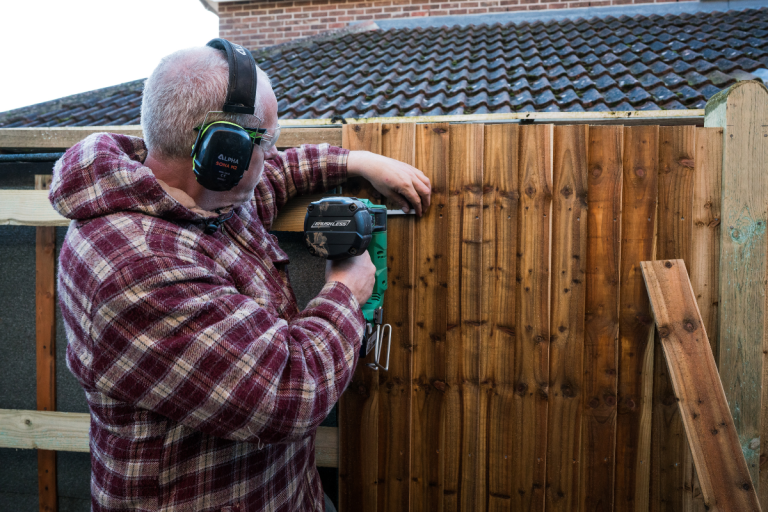Every year, nearly 100,000 people are injured doing jobs around the garden – and now an expert is naming the garden jobs you should never tackle yourself.
From tree surgery to laying patios, tasks that need to be completed in our outdoor spaces might seem straightforward and risk-free. However, an expert from MyBuilder.com, the reliable way to hire tradespeople, is highlighting the jobs that we shouldn’t tackle ourselves. Not only are they difficult jobs to do well, they pose a risk of injury should it all go wrong.
While more than 87,000 people a year are taken to hospital as a direct result of gardening accidents, more than 300,000 are injured while in the garden. While sometimes the injuries occur due to a case of bad luck, others are down to a lack of skill of training to make sure a job is done correctly and safely.
James Lewis, a gardener with MyBuilder.com who has over 20 years experience in the trade, says while some garden jobs are fine to DIY, others should always be done by a professional.
“Most of us are capable of mowing a lawn or pruning plants, but certain garden jobs require a knowledgeable and experienced pair of hands to get it right. Cutting corners and DIY-ing garden tasks can often be a false economy at best, with jobs needing correcting or redoing when it’s not good enough. But at its worst, badly done garden DIY can result in you injuring yourself, or those who use your garden.
“For any jobs that require specialist work, always call a professional in for advice at the very least. It will probably save you time and money in the long run, as well as giving you a beautiful – and safe! – garden.”
The garden jobs you should never attempt yourself include:
Laying patio slabs
Laying slabs for your patio may seem easy, but even just one incorrectly laid slab can lead to several problems down the line. From small but irritating issues such as weed growth, to uneven edges causing a trip hazard for you and your visitors, this is a job best left to experts. Badly laid slabs will cause your patio to shift over time, and will almost certainly need to be redone, so it’s not only a safety issue, but a false economy too.
Pruning trees
Now that winter is over, your trees will need some attention to remove any dead branches and foliage, to ensure they start to grow healthily in time for summer. While this may seem like a straightforward job, it’s actually one that requires a great deal of skill and experience. Over-pruning your trees can stress them and put them at risk of disease and pest-infestation, and cutting too close to the trunk or main branch will leave your tree exposed to potential decay. On top of this, should any stray branch cause damage to someone else’s home or garden. you will be liable for any costs and likely will not be covered by your home insurance.
Removing a tree stump
Digging out and removing a tree stump is physically demanding and time-consuming, and without the necessary specialist equipment, it could take days of your time. Removal of a tree stump could easily lead to injury due to the back-breaking nature of the work – so give yourself a break and hire a professional.
Removing a tree
Firstly, this task requires knowledge as to whether you need permission from the local council before you remove a tree. If you do – and permission has not been sought – you could face a significant fine. The Wildlife and Countryside Act 1981 makes it an offence to intentionally kill or injure protected species, destroy any protected shelter, or destroy any protected plants. Beyond this, cutting down trees really can be a dangerous job and failure to do it properly could cause severe injury or even death.
Soaking and drainage
If your garden suffered from flooding during this long and wet winter, or if you’re planning on laying a patio, you might require drainage work in your garden. This is undoubtedly a specialist job, as doing it wrong could cause damage to your neighbour’s garden, and referring to the Flood and Water Management Act 2010, homeowners have a duty to manage their drainage in a way that won’t cause damage to other homeowners. “French drains” (inserting a pipe underground to help excess water divert away from your home and into the street, a ditch or a sewer) are a popular choice, but require a great deal of expertise.
Fencing
Spring is a great time to repair and treat your fence after the rigours of winter. While it is possible to erect your own fencing, there are several reasons why it’s a bad idea. Firstly, certain heights of fencing can require planning permission, and you could be forced to take it down should you fall foul of this rule. Secondly, if you place the posts too far apart or they aren’t secure enough, it’s likely that the fence will not be sturdy enough to withstand extreme weather. This could result in having to replace and repair it again very quickly, costing more time and money, as well as presenting a danger should it fall on any guests or pets.
Creating a pond
While digging a pond might seem like simple – but hard – work, there’s a lot to consider. Your pond should be in some level of shade to reduce algae levels, and be on a flat, level ground. You may also need help from an electrician if your pond needs a pump or filter, and water and electrics do not mix! Finally, ponds can present a big danger to guests, so a professional can provide advice on sensible positioning and safety measures that can be taken.
Cutting a hedge
Did you know that trimming certain hedges between April and September is actually illegal? As well as this problem, the tools required to trim a hedge can easily cause injuries in the wrong hands. Hedge trimmers and secateurs are two of the tools most likely to cause garden-related injuries. Also, working on large hedges will require ladders to do a thorough job, and ladders plus power tools are a dangerous combination without a professional.


